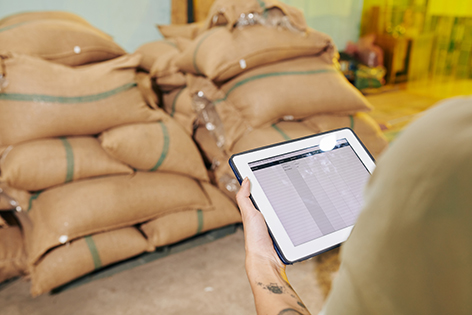Commerce Ministry Meets with Thai Rice Exporters Association to Accelerate Second-Half 2025 Rice Exports Towards 7.5 Million-Ton Target After 27% Drop in First Half; Eyes China, Bangladesh, Saudi Arabia, and Japan Markets
Mr. Jatuporn Buruspat, Minister of Commerce, together with Mr. Chantawit Tantasit, Deputy Minister of Commerce, held discussions with the Thai Rice Exporters Association, led by Pol. Lt. Charern Laothamatas, the Association’s President, to address the outlook for Thai rice exports in the second half of 2025 amid global market challenges. The meeting aimed to set joint strategies to strengthen the competitiveness of Thai rice on the world stage, with presentations covering the overall export situation, market trends, and private-sector proposals to the government to drive Thailand’s rice strategy forward under current conditions.
Mr. Jatuporn stated that rice is a key agricultural product, directly affecting both farmers’ income and the national economy. Any export disruptions would inevitably cause widespread impact. The government therefore prioritizes systemic solutions, from upstream to downstream, covering rice varieties, fertilizers, pesticides, and production costs. The Ministry has launched the “Green Flag Project” to help reduce farmers’ production costs and to align rice production with genuine global demand.
The Department of Foreign Trade has been tasked with coordinating with commercial attachés to urgently engage with Chinese authorities to fulfill the remaining 280,000-ton quota. The Ministry also plans to promote Thai rice at the China-ASEAN Expo 2025 in Nanning this September and the China International Import Expo (CIIE) 2025 in Shanghai this November. In addition, focus will be placed on other key markets such as Japan, Saudi Arabia, and Bangladesh for white and parboiled rice, as well as Hong Kong for premium jasmine rice, where demand continues to expand.
Domestically, the Department of Internal Trade has been instructed to roll out measures to stimulate consumption and release stocks of main-crop rice, with an estimated 8.5 million tons of paddy rice expected to be drawn down through initiatives such as “paddy markets,” low-interest credit, and farmers’ storage schemes, ensuring domestic purchasing power while channeling rice to global markets.
On the private-sector side, Mr. Chookiat Ophaswongse, Honorary President of the Association, said that 2025 is a highly challenging year due to abundant global rice supply and weaker demand. For instance, Indonesia, which imported 4 million tons last year, may purchase only limited volumes later this year. Meanwhile, rice prices have fallen sharply to 10.50 baht per kilogram from the previous 19–20 baht, directly hurting farmers.
Competitors have improved rice varieties, narrowing quality differences. If Thai rice remains more expensive, buyers are likely to switch to other countries. Therefore, emphasis must be placed on marketing and promotional activities, particularly in high-potential markets such as China and the Middle East. At the same time, Thailand should diversify its rice portfolio, especially in soft rice, which is gaining popularity across Asia.
Pol. Lt. Charern Laothamatas, Association President, urged the government to maintain a stable exchange rate, ideally at a weaker 33–34 baht per US dollar, to enhance Thailand’s competitiveness. Volatile currency swings directly impact exporters’ and importers’ purchasing and selling decisions.
He also called for the opening of the Saudi Arabian market, which requires hard rice for labor camps, and for pushing rice export quotas to Japan, as well as expanding exports to Iraq, a high-potential market that Thailand should further penetrate.
According to the Department of Foreign Trade, Thailand exported 3.73 million tons of rice valued at 75.56 billion baht during the first half of 2025 (January–June), representing a 27.29% decline in volume and a 36.45% decline in value compared with the same period last year. For the full year, exports are projected to reach 7.5 million tons, though pressure remains from intense price competition due to factors such as increased global rice output, India’s return to large-scale exports with high domestic stocks, reduced Indonesian imports, and the strengthening of the baht.
The main rice varieties exported were white rice, accounting for 47.19% of total exports, followed by Thai jasmine rice, parboiled rice, and fragrant rice. Key markets included Iraq, the United States, South Africa, China, and Senegal. While markets in Asia and Africa have contracted, Thailand still sees opportunities to expand further in the Middle East and Europe.
https://www.thaipbs.or.th/news/content/355786



